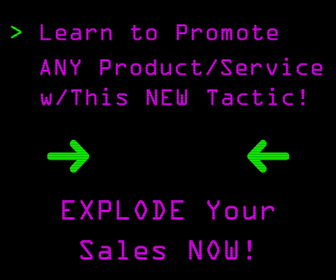Once you've brought in web traffic to your online store, your customers are eventually going to end up on a product page.
The copy on that page is critically important.
It can make or break a sale.
But what should you actually include in it?
What does one actually write for a web page like that?
Some of it depends on where your traffic is coming from.
Are you getting customers directly from Google searches? Or, is that where your competitors' traffic is coming from?
You can optimize product pages for the right keywords to maximize organic search traffic.
Nowadays, SEO doesn't require the kind of obvious keyword stuffing it did years ago, so you can still write naturally.
It's also a good idea to include keywords in the page title and product name, if possible.
Good product page copy should also answer any questions your customer might have, late in the buyer's journey process, about your product.
This can cover anything from what it's used for, to detailed specs that reveal what it's made of. It depends on what you're selling.
In a recent blog post, A Better Lemonade Stand explains the six key questions that a product page should answer.
Answer these Questions in Your Product Copy
Great copy is crucial for your product page. Not just for your customers, but also for SEO.
Using manufacturer or generic product information is a surefire way of making sure your product isn’t competitive in search rankings.
To create great product page copy, there are a few questions you can answer.
WHAT IS IT?
The first thing your product copy needs to address is what exactly the product is. If the customer is looking for a specific product, this is the first thing that they want answered.
For new products, they want to know what exactly it is and why they should be interested.
HOW DOES IT SOLVE THE PROBLEM?
What problem does your product solve and how does it solve it?
This is the fundamental question that you need to answer for your customers.
Perhaps it is as simple as a utility function like a sweater that keeps you warm.
In that case, include what materials or manufacturing processes have helped make your product’s solution possible.
Or maybe the problem is a little further down the hierarchy of needs, and the product just helps you look more stylish.
What story or process behind the product makes it desirable to own?
Whatever it is, by identifying the problem your product solves, you can understand the questions your customer would ask themselves when purchasing and tailor your copy to answer them.
WHY YOUR PRODUCT?
You’ve established that there is a problem and how your product can solve it.
Now, why should they choose your product over a competing one? What extra steps have you taken to ensure your sweater is the warmest?
What ingredients do you use that no one else uses?
Here is your opportunity to showcase why your product is special.
Even if you’re selling goods from another manufacturer, taking the time to show that you understand the reason why this product is better shows that you have taken the time to do your research.
WHAT IS IT MADE OF?
The final detail to add is what might be considered metadata for your product.
Providing information on the materials or ingredients that go into your products helps compensate for the inability of online shoppers to feel the products for themselves.
Simple information such as the ingredients, and basic instructions such as how to care for it or its intended use, can help the customer visualize the product and provide greater context to search engines.
You can find more advice for creating awesome product pages, including tons of product photography tips, in the full blog post from A Better Lemonade Stand.
CHALLENGE Yourself to Profit!
Free Download: Build Your Profit-Generating Online Business With This Free Blueprint
Sign Up, follow the easy steps and You'll get the tactics, strategies & techniques needed to create your online profit stream. It's free!



